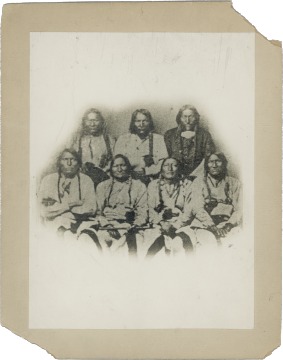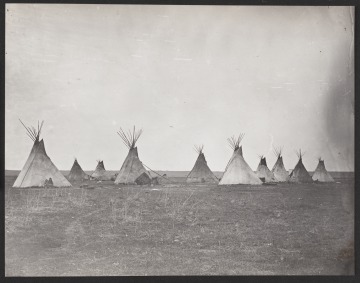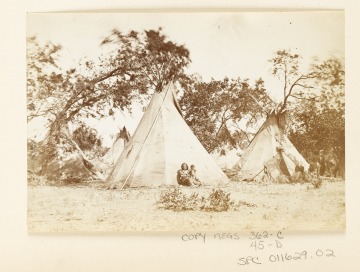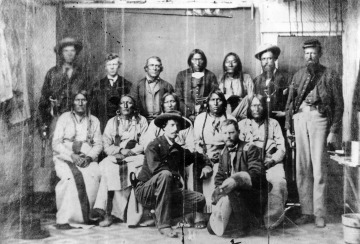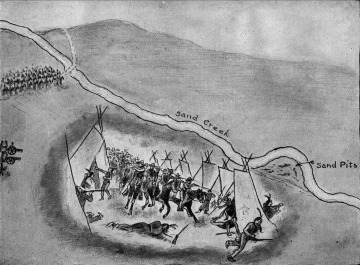1864: Citizen-army massacres Sand Creek women, children
The discovery of gold in Colorado in 1858 and 1859 touches off tension between whites and Native peoples, as miners encroach onto tribal hunting grounds. On November 29, a citizen-army led by Colonel John Chivington, a Methodist minister who is running for Congress, attacks a camp at Sand Creek. More than 150 people, mainly women and children of the Cheyenne and Arapaho peoples, are killed. The Native victims never suspect they will be attacked, as they believe that the U.S. is protecting them.
- Theme
- Land and Water
- Region
- Great Plains
Black Kettle and a delegation of Cheyenne and Arapaho chiefs, September 28, 1864
Courtesy National Anthroplogical Archives, Smithsonian Institution
Cheyenne encampment, 1867–1875
Courtesy National Anthropological Archives, Smithsonian Institution
Cheyenne encampment, 1869–1870
Courtesy National Anthropological Archives, Smithsonian Institution
Black Kettle (seated center) and other Cheyenne chiefs conclude peace talks with Major Edward W. Wynkoop (kneeling with hat) at Fort Weld, Colorado, in September 1864. Based on the promises made at this meeting, Black Kettle led his band back to the Sand Creek reservation, where they were massacred in late November.
Courtesy Denver Public Library, Western History Collection
Drawing showing the relative locations of Cheyenne tipis and Colorado regiments at the start of the battle at Sand Creek, Colorado, created between 1864 and 1880.
Courtesy Denver Public Library, Western History Collection
